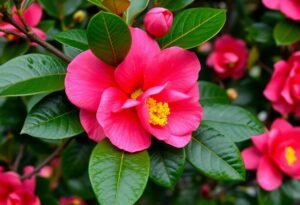Why Design a Small Japanese Garden?
A small Japanese garden is the ideal solution for those who wish to blend nature with architecture. A Japanese garden is not only aesthetically pleasing but also functional. In your natural surroundings, you can introduce peace and relaxation, which are so crucial in today’s fast-paced world. Every element of the garden, from stones to plants, has its place and meaning, allowing for a deeper understanding of harmony with nature.
Key Elements of a Small Japanese Garden
When designing a small Japanese garden, it’s essential to include several key elements. Water features, stones, vegetation, and architecture such as pavilions or pathways should always be present. These elements create a space where every detail impacts the whole. Introducing a small waterfall or pond can add an extra sense of tranquility to your garden.
Choosing Plants for Your Japanese Garden
Plants play a critical role in a small Japanese garden. Focus on those that are characteristic of Japanese borders, like bonsai, native grasses, azaleas, or tamarisk shrubs. Well-chosen plants can help achieve harmony and peace in a small space. Avoid overly intense colors; classic greens and soft hues will create a unique atmosphere.
The Role of Water in Japanese Gardens
Water is a vital element in any small Japanese garden. It can take the form of a pond, fountain, or stream, fostering an additional sense of harmony. The sound of water soothes the senses, and its presence symbolizes purity and the continuity of life. Therefore, regardless of size, consider incorporating water elements into your design.
Spatial Arrangement in Japanese Gardens
When designing a small Japanese garden, pay special attention to its layout. The garden should be arranged so each element is visible from various angles, creating an impression of depth. Using natural paths, stone arrangements, or wooden bridges can make the space more inviting. Combining diverse shapes and textures is key to forming an engaging scene.
Lighting and Atmosphere in Japanese Gardens
Proper lighting is an aspect that must be incorporated into any small Japanese garden. Lanterns, candles, and subtle LED lighting can create an incredible atmosphere for evening gatherings outdoors. It’s essential not to overdo the intensity of the light—soft lighting that highlights specific elements will be ideal.
Conclusion
Building a small Japanese garden is a great opportunity to bring harmony and tranquility into your life. A garden designed according to Japanese aesthetics can become a space for relaxation and contemplation, even in a compact area. Don’t wait—create your oasis of peace today!
Disclaimer
This article is for informational purposes only and does not constitute legal or professional advice. Consult a professional before starting garden work.

















